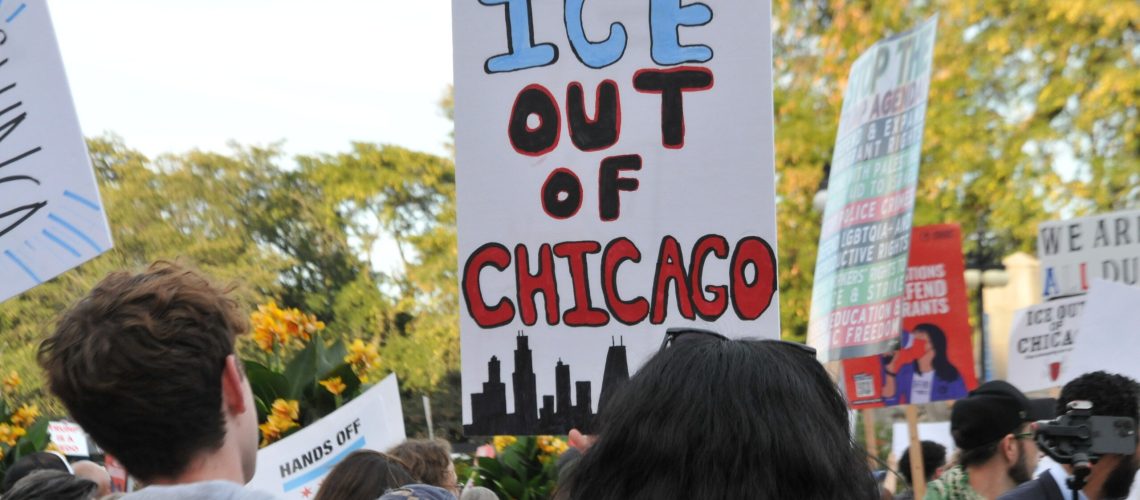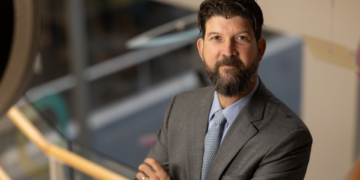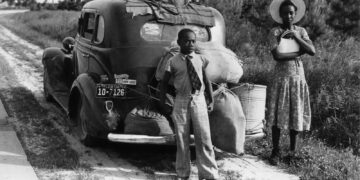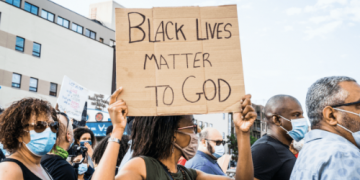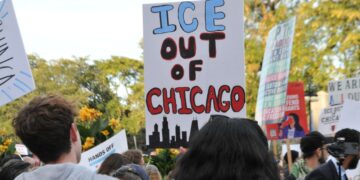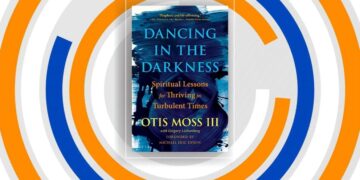CHICAGO—From the bustling streets of Pilsen to the steps of Grant Park, Chicago saw a wave of protests as communities mobilized in response to sightings of Immigration and Customs Enforcement (ICE) activity.
Residents and clergy across the city responded to the Trump administration’s launch of “Operation Midway Blitz”—an immigration enforcement campaign targeting sanctuary jurisdictions, including Chicago and Illinois.
Organizers said demonstrations were held wherever ICE vehicles were spotted or feared, turning street corners, church pews, and public plazas into stages of resistance. Unmarked vans and street patrols triggered immediate community responses, while local activists used text alerts and social media to coordinate rapid actions.
In Pilsen, where ICE sightings were reported, a Mexican Independence Day celebration was more subdued, with dancers passing out “know your rights” flyers and organizers moving some festivities indoors, according to Reuters.
The surge in protests builds on momentum from earlier actions. On Sept. 1, more than 10,000 people joined the “Workers Over Billionaires” march, where Mayor Brandon Johnson declared, “No federal troops in the city of Chicago.” According to WBEZ, the mayor signed an order that prohibits Chicago police from cooperating with federal agents.
On Sept. 6, roughly 8,000 demonstrators filled Congress Plaza Garden in a rally organized by the Coalition Against the Trump Agenda (CATA) and the Illinois Coalition for Immigrant and Refugee Rights (ICIRR). They marched past Trump Tower, chanting against raids and deportations.
Frank Chapman of the National Alliance Against Racist and Political Repression told the crowd, “Under Mayor Johnson’s leadership, violent crime is at its lowest point since 2019. Chicagoans have shown militant opposition to Trump’s policies, and we will not accept federal troops in our city.”
On Sept. 8, hundreds returned downtown under the banner “Faith Over Fear.” The rally drew Black, Latino, Muslim, Jewish, Christian, and immigrant voices, united against what they called federal overreach under the guise of restoring order.

Event co-host Rami Nashashibi, executive director of the Inner-City Muslim Action Network, drew parallels between Chicago and international struggles.
“We know the evils of occupation,” he said. “Whether it’s happening on the West Side or the West Bank, we must reject the notion that troops bring peace. What brings peace are jobs, healthcare, and opportunities for our young people.”
Rev. Ciera Bates-Chamberlain, also a co-host, turned to scripture for encouragement. “Be strong and courageous. Do not be afraid, for the Lord your God is with you wherever you go,” she declared. “The battle is not in their hands. The battle is in God’s hands.”
“We reject the tools of guns and troops,” said Abdullah Mitchell of the Council of Islamic Organizations of Greater Chicago, representing 77 Muslim groups. “We embrace communication, community, and faith.”
Father Michael Pfleger, speaking to The Final Call, after the event, invoked Dr. Martin Luther King Jr.’s vision of the “umbrella of civil rights,” stressing that deportations, racism, hunger, homelessness, and underfunded schools are all connected.
“When anybody is hurt, we’re all hurt. We’re family,” he said. “What happens to the Nation of Islam happens to Catholics. What happens to a young person happens to an elder.
Once we see ourselves as brothers and sisters, then a person on the North Shore doesn’t just get mad when Sandy Hook happens—they get mad when a child is shot on 79th Street.”
Also speaking exclusively to The Final Call, event speaker Rev. Otis Moss III cautioned that progress has always been driven by a determined few.
“Whether you’re talking about abolition, the anti-lynching movement, or the civil rights movement, it has always been a small cadre doing the work while 90 percent benefited,” he said. “Our job is to pass on the values and the legacy to the next generation of warriors. This fight is for the next seven generations.”
Activist Carolyn Ruff echoed the need for unity, invoking the legacy of Congressman John Lewis.

“We’re going to show the man in the White House that we control our community, we control our state, and we’re going to fight for justice,” she said. “We’re not going to be destructive—we’re going to come together, keep the dream alive, and keep hope alive.”
Imam Tariq El-Amin, said Black Americans cannot afford to ignore today’s struggle.
“This is the same fight our ancestors waged in the ’50s and ’60s. We thought it was dead, but it has reared its ugly head again,” he said. “Look at the cutbacks made by the federal government—most of those impacted were Black people in senior positions.
Today it’s us. Tomorrow it can be you.” He added, “The compassion immigrants ask for today was denied to my grandparents when they came North. As Black people and Muslims, we cannot allow cruelty to rob us of our humanity.”
Rev. C. Janet Wilson invoked the memory of Selma as she addressed the gathering. “We remember the dogs, the hoses, the bridges. But we also remember that we were not afraid then, and we are not afraid now. Forward now, backward never.”
Trump’s National Guard threat
Underscoring the urgency of these demonstrations were President Trump’s repeated threats to send the National Guard into Chicago to “bring down crime.”
While he framed the move as a crackdown on lawlessness, city leaders argued it would amount to an occupation of Black and Latino neighborhoods. Community members said the threat was part of a broader pattern of criminalizing marginalized people rather than addressing root causes.
“You don’t fix Chicago with troops,” one organizer said. “You fix it with investment, opportunity, and respect.”
The echoes of history were not lost on demonstrators. Community leaders pointed to Black Panther leader Fred Hampton’s assassination in 1969—when federal agents worked hand-in-glove with Chicago police—as proof that federal force in Chicago has rarely been about protection.
More recently, in 2020, federal agents deployed under Operation Legend were accused of targeting protesters instead of addressing root causes of violence. “Then, as now,” one speaker said, “agents were sent to control, not to uplift.”
This is not the first time Chicago has faced federal intervention. But what makes the current moment unprecedented, organizers stressed, is the president’s push to unleash troops and ICE without request or cooperation from local or state officials, undermining the city’s elected leadership and raising alarms about federal overreach.
Much of the anger was directed at President Trump, whose language and policies toward immigrants and cities like Chicago were described as dangerous and dehumanizing. David Black used the imagery of a forge:
“Trump thinks he can smash Chicago with a hammer. But when you strike a forge, you only create something stronger. Chicago will turn his destruction into creativity.”
Beyond fiery words, leaders stressed the urgency of defending immigrants and the marginalized. Father Brendan Crew said, “Stop scapegoating our bricklayers, our carpenters, the people who clean your hotels. We are all God’s family, and when you attack them, you attack all of us.”
Speakers also warned residents about deceptive ICE tactics and urged communities to become “faith over fear sanctuaries” by protecting neighbors and refusing to cooperate with unjust raids.
While the president and his allies call for militarization, community leaders are demanding the opposite: investment. Speakers called for fully funded schools, affordable housing, healthcare access, and jobs programs for young people.
According to WBEZ, Mayor Brandon Johnson has argued that public safety comes not from federal troops but from opportunities that lift families out of poverty.
The scale of the protests underscores the city’s resistance. More than 10,000 joined the Labor Day march, 8,000 gathered Sept. 6 downtown, and hundreds more rallied on Sept. 8 and 9.
City data shows violent crime in Chicago has dropped to its lowest levels since 2019, contradicting claims of a city “out of control.” Community organizers credit this decline not to outside enforcement, but to homegrown efforts—unity movements, ongoing gang truces, and the tireless work of violence interrupters who mediate conflicts before they erupt.
One of the most publicized examples was the gang truce documented by the Unity Movement in Chicago, shared widely across social media. Videos showed former rivals shaking hands, embracing, and pledging to end cycles of retaliation.
Organizers said these images reflected what residents already knew: that the people most affected by violence are taking the lead in creating peace.
“When the community comes together, that’s real public safety,” said one activist. “No soldier or federal agent can do that.”
Meanwhile, ICE deportations in Illinois rose by nearly 30% in 2023, according to state records, heightening fears of renewed mass arrests under federal campaigns.
The rallies closed as they often began, with chants of defiance. From Bronzeville to Little Village, from Englewood to Rogers Park, the message was the same: Chicago’s strength lies in its diversity and its determination to defend the most vulnerable. “We built this city, we will defend this city, and we will decide its future,” said Rev. Moss III.
On Sept. 9, hundreds marched again down Michigan Avenue to challenge Operation Midway Blitz. Omar Flores of the Chicago Alliance Against Racist and Political Repression said,
“We cannot accept the divide-and-conquer rhetoric that calls our neighbors criminals and our siblings illegals. These are the people Trump is attacking, and we must say loudly and proudly that this is not going to happen.”
